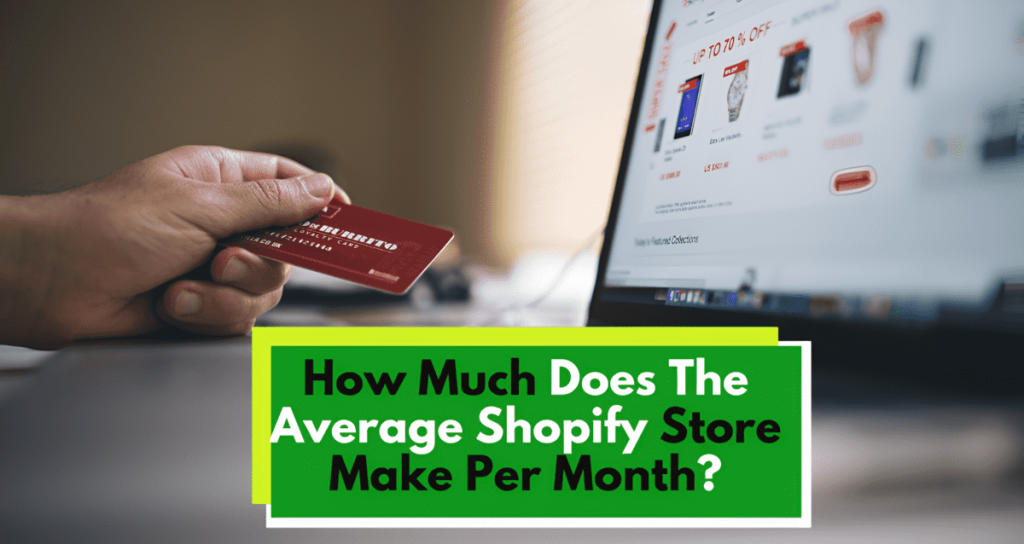Introduction
Understanding how much the average Shopify store makes per month is crucial for setting realistic business expectations. Shopify, a leading e-commerce platform, supports millions of stores worldwide, each with varying levels of success. The average monthly revenue provides a benchmark for new and existing store owners.
Average Shopify Store Revenue
Shopify hosts over 7 million stores globally, across various industries. The average monthly revenue for a Shopify store is around $5,583. This figure, however, can vary significantly based on several factors such as the niche, product quality, and marketing strategies employed. For example, stores in high-demand niches can generate over $10,000 monthly, while others might struggle to make $1,000.
Table 1: Average Monthly Revenue by Store Type
| Store Type | Average Monthly Revenue | High-End Revenue | Low-End Revenue |
|---|---|---|---|
| Fashion & Apparel | $6,000 | $12,000 | $1,500 |
| Electronics | $5,800 | $15,000 | $2,000 |
| Health Products | $7,200 | $20,000 | $3,000 |
| Niche Hobbies | $4,500 | $8,000 | $1,200 |
| Digital Products | $3,500 | $7,000 | $500 |

Factors Affecting Shopify Store Earnings
Key factors influencing a Shopify store’s revenue include:
- Product Quality and Market Demand
- High-quality products that meet market demand are crucial. Stores with lower return rates (below 10%) generally perform better financially.
- Stores offering unique or niche products often command higher prices and better profit margins.
- Marketing Strategy
- Effective marketing is essential. Successful stores typically allocate about 10% of their revenue to marketing efforts, including SEO, social media ads, and email campaigns.
- A Return on Marketing Investment (ROMI) of 4:1 is common, meaning for every dollar spent on marketing, stores earn four dollars in return.
- Customer Acquisition and Retention
- A study by Stripe suggests that stores need around 150-200 active customers per month for sustainable revenue.
- Repeat customers are particularly valuable, often spending up to 67% more than new customers.
- Pricing Strategy and Profit Margins
- Profit margins in e-commerce typically range from 5% to 20%. Higher margins are common in niches with low competition and high demand.
Table 2: Impact of Profit Margins on Monthly Revenue
| Revenue | 5% Profit Margin | 10% Profit Margin | 20% Profit Margin |
|---|---|---|---|
| $5,583 | $279.15 | $558.30 | $1,116.60 |
| $10,000 | $500 | $1,000 | $2,000 |
| $20,000 | $1,000 | $2,000 | $4,000 |
Challenges and Realities
Running a Shopify store involves several challenges:
- Competition
- The e-commerce market is highly competitive, especially in popular niches like fashion and electronics. SEO optimization and a unique value proposition are essential for standing out.
- Marketing Costs
- Marketing expenses can significantly impact profits if not carefully managed. Checkout.com highlights the importance of tracking marketing spend and adjusting strategies based on performance data.
- Customer Experience
- Quality customer service is critical. Visa’s data suggests that poor customer service can reduce repeat purchases by up to 13%.
To protect against revenue losses from chargebacks, partnering with Merchanto.org is advisable. As an official Visa and MasterCard partner, Merchanto.org specializes in chargeback prevention, helping maintain a steady cash flow. Learn more about Merchanto.org.

Maximizing Shopify Store Revenue
To boost revenue, consider the following strategies:
- Optimize for Conversions
- Simplify the checkout process to reduce cart abandonment. A/B testing can help identify high-converting elements on your site.
- Use tools like Shopify Analytics to monitor conversion rates and refine your approach.
- Expand Product Lines
- Diversifying your product range can attract a broader customer base. Conduct market research to identify new products that align with your existing offerings.
- Leverage Shopify Apps and Integrations
- Utilize apps like Klaviyo for email marketing, Bold Upsell for upselling, and ReConvert for post-purchase upselling to increase average order value (AOV).
- Focus on Customer Retention
- Implement loyalty programs and personalized marketing campaigns to encourage repeat purchases. Shopify’s customer data shows that repeat customers account for up to 40% of a store’s revenue.
Table 3: Tools for Increasing Shopify Store Revenue
| Tool/Integration | Purpose | Expected Revenue Impact |
|---|---|---|
| Klaviyo | Email marketing | 10-30% increase in AOV |
| Bold Upsell | Upselling products | 15-20% increase in AOV |
| ReConvert | Post-purchase upselling | 10-15% increase in repeat purchases |
| Google Analytics | Tracking conversion rates | 5-10% improvement in conversion rate |
Conclusion
Shopify stores offer significant revenue potential, but success depends on product quality, marketing strategy, and customer retention. By focusing on these areas, store owners can maximize earnings and build a sustainable business.
Achieving success with a Shopify store requires strategic planning, ongoing optimization, and a focus on delivering value to customers.



